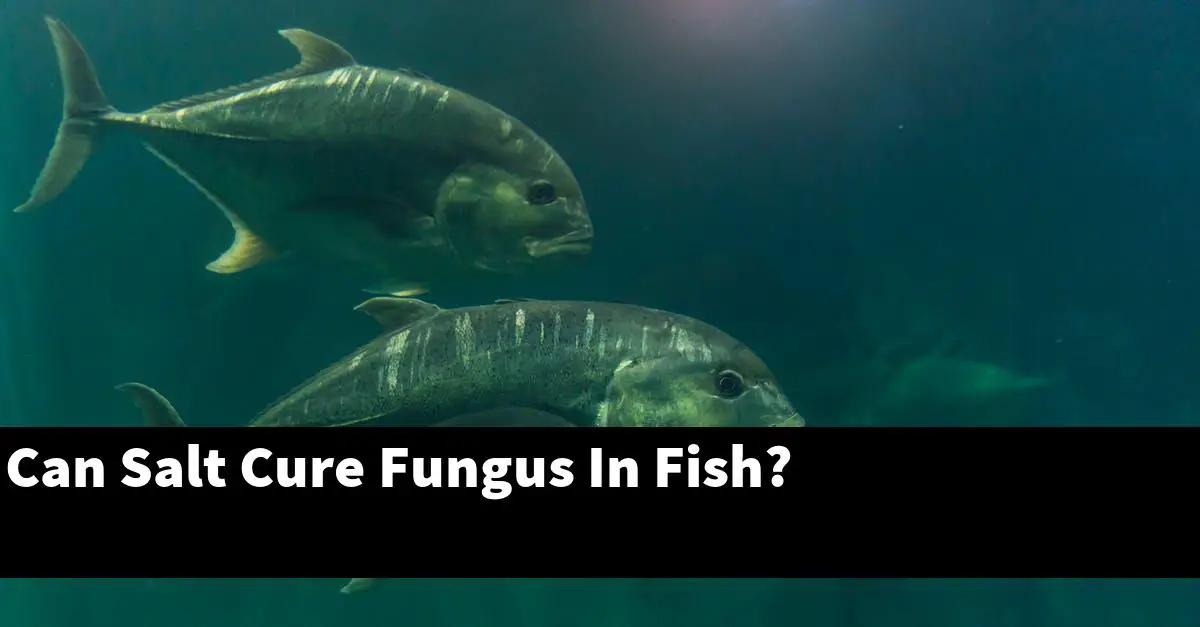Salt is a natural antifungal agent and can be used to treat fungus in fish. It is important to use a non-iodized salt, as iodine can be toxic to fish.
Salt can be used to treat both internal and external fungal infections.
How to treat fungus on fish?
Fish can be susceptible to fungal infections, which can result in a number of problems including:
-Loss of appetite
-Weight loss
-Swelling
-Reduced activity
There are a number of treatments available for treating fungal infections in fish, with different medications and regimes likely to be more effective for different types of fungus. Generally, the first step is to identify the type of fungus involved, and then to treat the fish with an appropriate medication.
Some of the more common medications used to treat fungal infections in fish include:
-Cephalosporins (such as cephalexin)
-Fungicides (such as itraconazole or ketoconazole)
-Analgesics (such as ibuprofen)
-Vitamin B12 supplements
It is important to note that while some treatments may work well on their own, many fungal infections can be treated more effectively if they are also treated with a fungalicide. This is because fungicides can kill the fungus while leaving the fish healthy, and they are also effective at preventing the fungus from returning.
Will fish fungus go away by itself?
Fish fungus is a fungal infection of fish. It is most common in tropical fish, but can also occur in cold-water fish.
Fish fungus is spread through contact with the fungus on the skin or mucous membranes of another fish. The fungus can grow rapidly in warm, moist environments.
There is no cure for fish fungus, but treatment can help prevent the spread of the infection. Treatment involves cleaning the fish and its environment, treating any wounds with an antifungal agent, and providing supportive care.
If the infection is severe, the fish may need to be hospitalised.
Fish fungus is most commonly treated with antifungal agents such as ketoconazole or itraconazole. These medications can be used alone or in combination with other treatments.
How to treat cotton wool disease in fish?
Cotton wool disease is a bacterial infection of the skin and gills of fish. The disease is caused by the bacterium Pseudomonas aeruginosa, and is most commonly found in tropical and subtropical fish.
The first step in treating cotton wool disease is to isolate the fish from other aquarium inhabitants. Treatment usually involves antibiotics and/or fungicides.
If the fish is seriously ill or has died, it may be necessary to euthanize it.
Can I remove the fungus from my fish?
the fungus will vary depending on the fish’s individual situation. However, some general tips that may help include:
– Clean the fish’s environment and water carefully, using a quality fish cleaning product if necessary.
– Remove any debris or food that may be contributing to the fungus.
– Treat the fish with an antifungal medication, if necessary.
– Monitor the fish’s health and if the fungus reappears, repeat the treatment process.
How long does it take for fish fungus to go away?
Fish fungus is a fungal infection of the skin or gills of fish. It is caused by a number of different fungi, and can vary in severity.
In general, fish fungus will go away on its own after a period of time. Treatment is generally not necessary.
How do you use aquarium salt for fungus?
Aquarium salt is a mineral supplement that is used to control fungus in marine aquariums. It is a solution of sodium chloride, made from table salt.
The concentration of salt in aquarium salt solutions is usually around 1% (by weight).
Aquarium salt solutions are effective at controlling fungus because they dehydrate the fungus cells. Dehydration slows the growth of fungus and can eventually kill it.
Aquarium salt solutions also contain other chemicals that can kill fungus cells.
Can salt cure bacterial infections in fish?
There is no scientific evidence to support the claim that salt can cure bacterial infections in fish. In fact, there is limited evidence to suggest that salt may actually worsen the condition of fish with bacterial infections.
The use of salt as a treatment option for fish infections is largely based on anecdotal evidence and is not recommended by professional organizations.
How do you treat fungal infections on fish?
A fungal infection on fish is typically treated with a combination of antibiotics and antifungals. Treatment typically begins with an antibiotic to kill the bacteria that is causing the infection, and then antifungals are used to treat the fungus.
Conclusion
Yes, salt can cure fungus in fish. It is a common misconception that salt will kill all fish, but it is actually a very effective treatment for many diseases and parasites, including fungus.
When treating fish with salt, it is important to use a non-iodized variety and to dissolve it in water before adding it to the tank.


